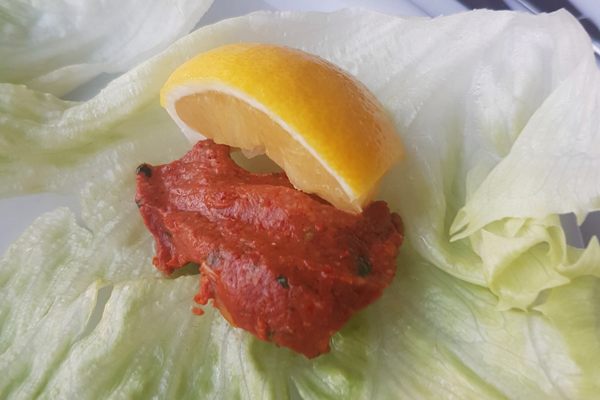Prepared Foods
Kars Goose With Bulgur Wheat
In Northeast Turkey, one special bird makes a cultural and culinary centerpiece.
In Northeastern Turkey, a very special goose finds its home in the harsh but beautiful Cilavuz Valley. The Kars goose is so-called for being distinct to the regions of Kars and Ardahan along the Armenian border. The birds’s appearance can vary slightly. But no matter whether the birds come with speckled gray wings and ivory bellies, straw-colored collars and brown-feathered bottoms, or top-to-bottom pearly white plumage, all are part of a unique breed that’s rarely seen outside its native region.
Kars geese are raised from hatchling to adult over the course of about eight months. Local women herd the geese, marking their ownership with different colored stripes painted around the birds’ necks. They feed on native grasses and weeds for several months; then, just before slaughter, the geese get fattened on a hefty diet of grains. Finally, as winter approaches, the plump fowl meet their demise.
Most Kars geese are salted and preserved in cold storage through the winter, becoming an important source of protein and fat in local diets. But for the special guest, locals will prepare a particular dish known as Kars kazı ve bulgur pilavı (Kars goose with bulgur pilaf) using a tandoor. The best versions of this specialty result from spending time in the deep clay oven that can heat up to 900 degrees F (480 degrees C). Inside the oven, the goose gets cooked by convection, while the drippings get captured by the bulgur placed in a dish beneath the roasting bird. Meanwhile, stray splatters of juice and fat steam upward from the tandoor floor, infusing the bird with a savory, smoky flavor. Although the salted, cooked goose can result in a dry or chewy eating experience, proper preparation will find a nicely-browned bird and golden pilaf served alongside toasty tandoor bread. Altogether, Kars kazı makes for a winter warmer that tastes uniquely of the land and labor from which it was made.
Written By
y yamancakirogluSources
- www.serhansuzer.com/en/kars-a-city-that-brings-you-back-for-more
- www.ethnotraveler.com/2013/10/herding-geese-in-kars/
- traveltoeat.com/kars-in-north-eastern-turkey/
- www.researchgate.net/publication/271934689_Goose_feeding_by_local_breeders_in_Turkey
- www.cambridge.org/core/journals/world-s-poultry-science-journal/article/div-classtitleeconomic-analysis-of-commercial-goose-breeding-by-small-family-farmsdiv/7C556238BF45A629A0DEBC38A0F12EE1
- www.fondazioneslowfood.com/en/ark-of-taste-slow-food/kars-goose/














